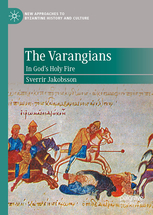The Rus may not have looked upon themselves as Russians, Ukrainians or Swedes, but how did they self-identify? And perhaps more importantly, to whom did they owe allegiance. Our podcast with dr. Þórir Hraundal (see under the podcast section) we discussed how various groups of Rus may have competed, fought and even enslaved one another rather than forming one cohesive group that saw themselves as distinct from the locals. When the different groups of Rus formed kingdoms centred on Novgorod and later Kyiv, did they see themselves as a tribe or a proto-nation of sorts? Or were different dynasties competing? What held the kingdoms together, and why did they so often tear themselves apart?
Dr. Daniel Ostrowski and Christian Raffensberger of the Ukrainian Studies department at Harvard University claims that the people who mattered most to the Rus were in fact the immediate family rather than larger dynasties. In a description of their forthcoming book, they say:
“If dynasties are difficult to discuss in the medieval world, where does this leave us? The answer is with families. Families are the building blocks of dynasties and it is through studying families – fathers, mothers, sons, daughters, and spouses of both – that we are able to better understand the human face of history. Families, in turn, are part of more extended kin entities that we call clans, which themselves can comprise multiple families which may, or may not, always share the same overarching objectives.”
They will be discussing this further at a live zoom session on Wednesday, March 24th, at 16.00 UTC (Greenwich Mean Time)
To register, click the following link. Registration required. Also available on youtube.
The Ruling Families of Rus’ | Ukrainian Research Institute at Harvard University


